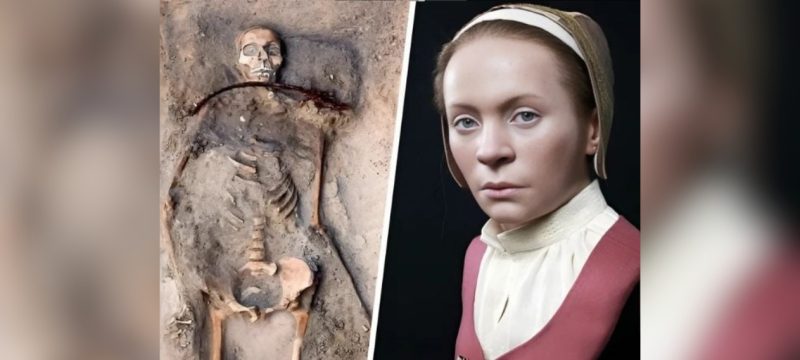In a remarkable blend of archaeology and modern technology, scientists have reconstructed the face of a 400-year-old woman believed to be a “vampire” by her community. The young woman, named “Zosia” by locals, was buried in a cemetery in Pien, northern Poland, with a padlock on her foot and an iron sickle across her neck, traditional methods used at the time to prevent a supposed vampire from returning from the dead.
Using DNA analysis, 3D printing, and clay modeling, Swedish archaeologist Oscar Nilsson and his team at Nicolaus Copernicus University have carefully reconstructed her face, offering a human perspective on the mysterious burial. Zosia’s remains were unearthed in 2022, revealing that she was likely from a wealthy family and suffered from health issues causing fainting spells, severe headaches, and possible mental distress — symptoms that could have fueled suspicions of vampirism in the 17th century.
Also Read: Scientists develop oxygen particle injection allowing survival without breathing
The recreation process involved creating a 3D printed replica of Zosia’s skull, building layers of plasticine clay “muscle by muscle” to reveal a life-like face. Nilsson’s approach highlighted Zosia as a human rather than the supernatural figure she was feared to be.
The discovery of Zosia’s grave, along with a child buried in a similar manner, underscores Europe’s turbulent past, when superstition and fear led communities to drastic measures to protect against the undead.









